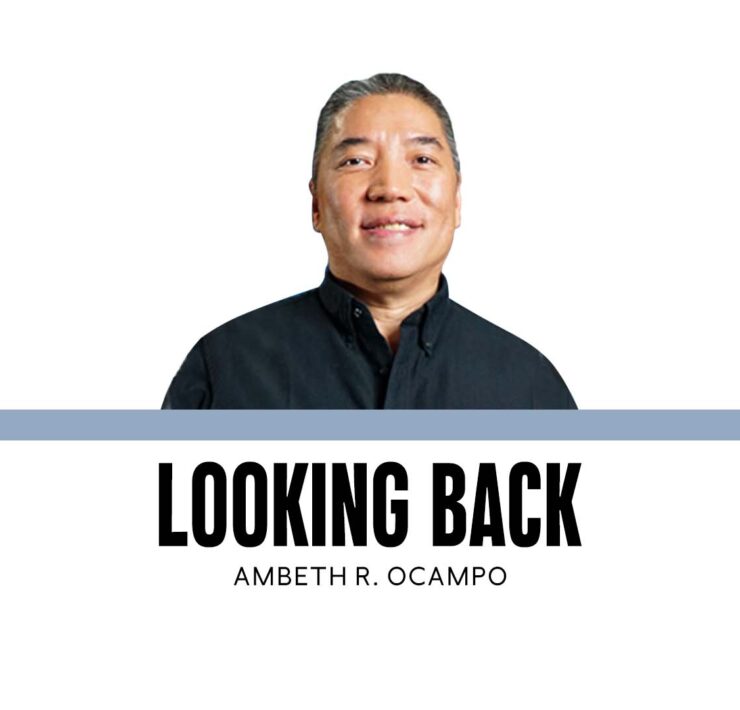Our tastes and the Michelin Guide

While I understand the celebration that comes with the inclusion of the Philippines in the world-famous Michelin Guide, our culinary culture needs no validation. Not from foreigners. Nor from a company whose core business is manufacturing tires. Goodyear and Bridgestone are the tire brands I remember from my childhood, Michelin I only encountered as an adult and not as a tire brand but as a food guide.
My friend Emil Marañon jumped the gun tweeting about the exclusion of Iloilo from the list. Manila may be the capital city, but there are culinary cultures and treasures outside it. Cebu was listed, what about Pampanga? Were the drumbeaters of Pampanga still smarting from President Marcos’ veto of a bill, passed by both houses of Congress that sought to declare Pampanga as the “Culinary Capital of the Philippines?” Full disclosure here, I am half Kapampangan and my Bachelor of Arts thesis was on “Food in Pampango Culture.” At the risk of being stripped of my Outstanding Kapampangan Award, I agree with the President’s veto message, pertinent parts of which read as follows:
“It cannot be denied that Pampanga is celebrated for its diverse and flavorful dishes, traditional cooking methods, and a strong culture of food innovation … [but] I cannot ignore the concerns regarding the declaration’s lack of historical basis, the absence of a thorough study that shows key performance indicators for such designation, and the possibility that the bill may offend sensibilities in other provinces that are equally proud of their culinary contributions … Our regions contribute their indigenous dishes with certain recipes that are best done in the areas of origin of their ingredients. All our culinary variations reflect the rich cultural diversity of a group of people scattered among the Philippine islands.”
To add historical context to foreign (in)validation of the Philippines and the Filipinos, we need to look back four centuries to Antonio de Morga’s “Sucesos de las islas Filipinas (Events of the Philippine Islands)” first published in Mexico in 1609 and Jose Rizal’s annotated edition of the same published in Paris in 1890. For me, Chapter VIII of Morga’s work is the most important, an ethnography of the Philippines and the Filipinos at the dawn of the Spanish contact. Morga said of our food:
“Their daily fare is composed of: rice crushed in wooden pillars and when cooked is called morisqueta (this is the staple throughout the land); cooked fish that they have in abundance; pork, venison, mountain buffaloes that they call carabaos, beef, and fish that they know is best when it has started to rot and stink.”
Some 280 years later, in the British Museum, Rizal read it and was so upset he dashed off this long footnote:
“This is another preoccupation of the Spaniards who, like any other nation, treat food to which they are not accustomed or is unknown to them with disgust. The English, for example, feel horror to see a Spaniard eating snails. To the Spaniard, roast beef is repugnant and he cannot understand how Steak Tartar or raw beef can be eaten; the Chinese who have tahuri and eat shark cannot stand Roquefort cheese etc. etc. This fish that Morga mentions that cannot be good until it begins to rot, is bagoong, and those who have eaten it and tasted it know that it neither is nor should be rotten.”
Everyone knows that bagoong is fermented shrimp or fish paste, so Morga was right. And Rizal? He merely defended Filipino culture against foreign or colonial bias. In the process, he not only explained what the Filipino was all about. He rewrote history, and framed it from a Filipino point of view. A pity that most Filipinos only know about Rizal’s novels, the Noli and the Fili, in this forgotten book containing Rizal’s often angry footnotes to “Sucesos de las islas Filipinas,” we see him imagining the nation before it was born. Rizal tried to define what it is to be Filipino and that led to the emergence of the nation as we know it today.
A decade ago I taught an elective course on “Food in Philippine Culture” in Sophia University, Tokyo. I assigned my students to try our street food that was sold outside Kojimachi or St. Ignatius church on Sunday mornings. Adventurous students sampled Philippine food in the Kyabakura or hostess clubs of Kabukicho that had Filipina staff, a handful actually cooked Filipino food from YouTube videos.
When the reports came in, I was horrified by their comments: “Your food is brown, oily, and unhealthy!” One student could not even imagine champorado, declaring in her high-pitched Nihongo voice: “Eeew! Chocolate with rice?” When then Philippine Ambassador to Japan Manolo Lopez heard about this, he set his cook and agriculture attaché to work. Two weeks later, the class was treated to: pancit palabok, lumpiang sariwa, chicken pork adobo, fresh mangoes, ube ice cream, pastillas, etc. Our culinary reputation restored with one sumptuous merienda.
Our food, our palate, our linamnam defines who and what we are as Filipinos. The Michelin guide is best taken with a grain of salt or a dollop of bagoong.
—————-
Comments are welcome at ambeth.ocampo@inquirer.net
Ambeth is a Public Historian whose research covers 19th century Philippines: its art, culture, and the people who figure in the birth of the nation. Professor and former Chair, Department of History, Ateneo de Manila University, he writes a widely-read editorial page column for the Philippine Daily Inquirer, and has published over 30 books—the most recent being: Martial Law: Looking Back 15 (Anvil, 2021) and Yaman: History and Heritage in Philippine Money (Bangko Sentral ng Pilipinas, 2021).


















A shared future through deeper China-Asean synergy